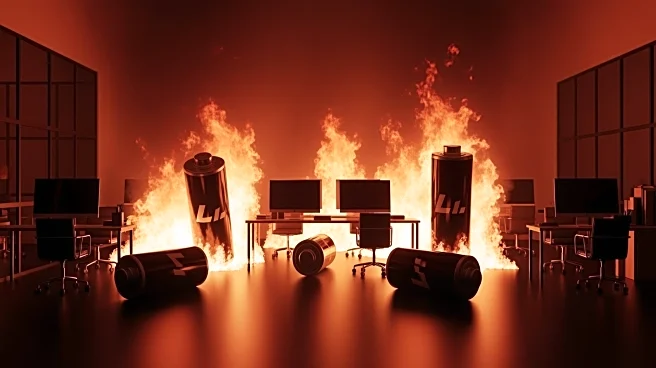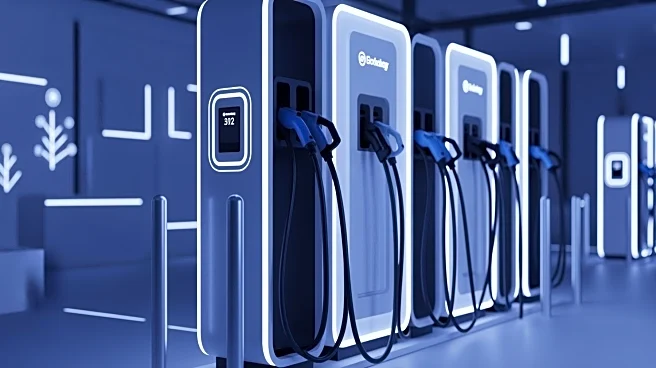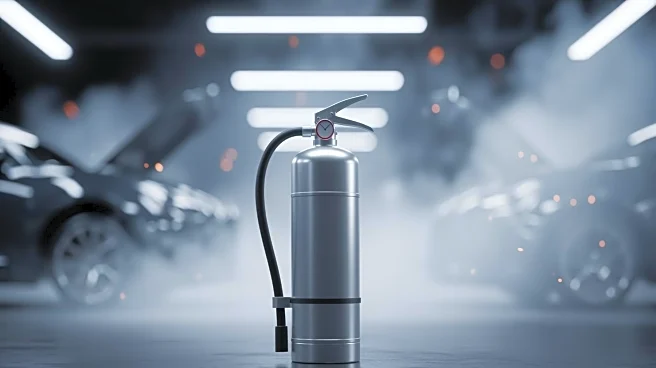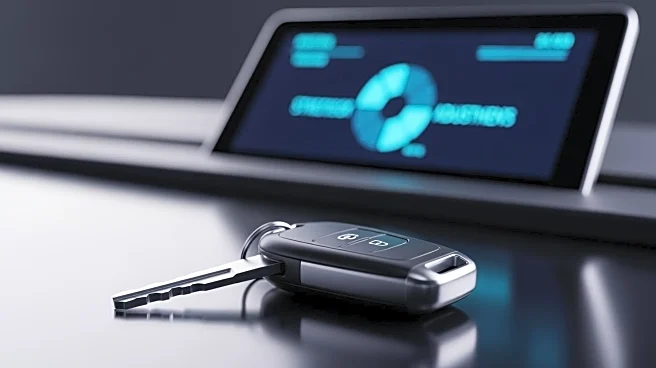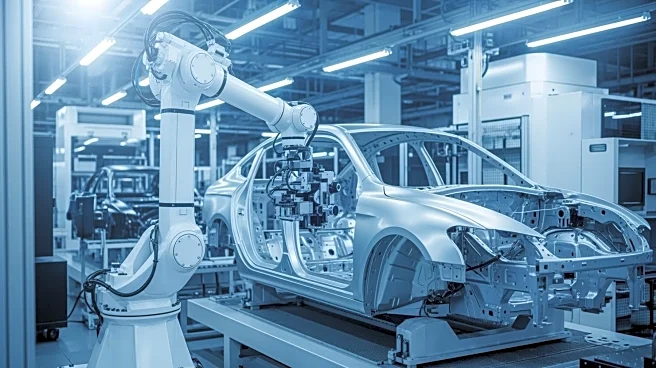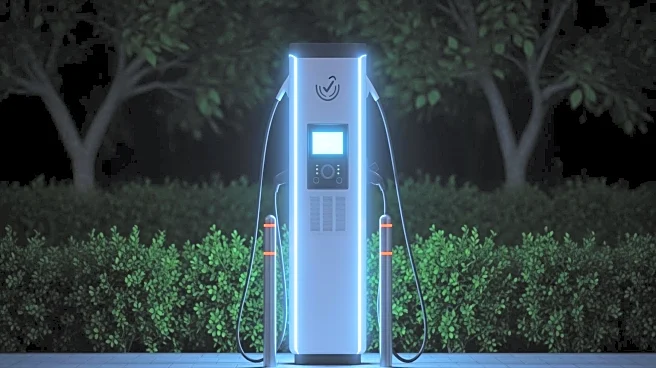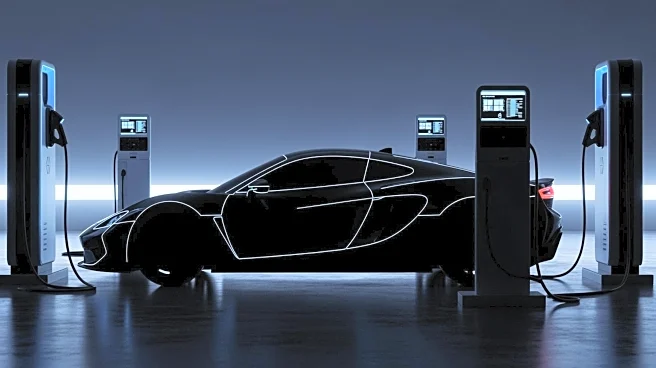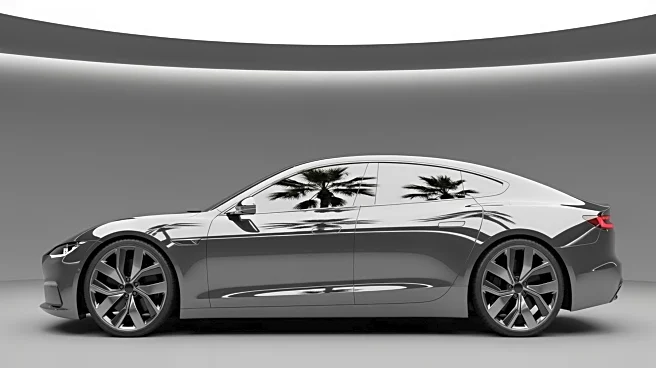What's Happening?
A significant fire broke out at General Motors' design studio in Pasadena, California, involving lithium-ion batteries and prototype cars. The Pasadena Fire Department responded to the incident, which was declared a four-alarm fire due to the scale and hazardous
materials involved. More than 100 firefighters and a hazardous materials team were deployed to combat the blaze. The fire presented unique challenges as lithium-ion battery fires cannot be extinguished with water, which could cause destabilizing chemical reactions. Firefighters faced difficulties in tracking down the source of the blaze as thick smoke engulfed the 149,000-square-foot campus. A firefighter was trapped during the incident but was safely rescued without injuries. The cause of the fire is under investigation, and crews are expected to remain on scene overnight to manage the hazardous materials.
Why It's Important?
The fire at General Motors' design studio highlights the risks associated with lithium-ion batteries, which are increasingly used in various industries, including automotive and technology. The incident underscores the need for specialized training and equipment to handle such fires, which can pose significant safety hazards due to the potential for chemical reactions and explosions. The event may prompt a reevaluation of safety protocols and emergency response strategies for facilities dealing with lithium-ion batteries. Additionally, it could influence public policy and industry standards regarding the storage and handling of these batteries, impacting manufacturers and emergency services alike.
What's Next?
Fire crews will continue to monitor the site to ensure no further hazards arise from the lithium-ion batteries involved in the fire. The investigation into the cause of the blaze is ongoing, which may lead to changes in safety regulations and practices at facilities using similar materials. General Motors and other stakeholders may need to reassess their safety measures and emergency preparedness plans to prevent future incidents. The event could also lead to increased scrutiny from regulatory bodies and influence future design and construction standards for facilities housing hazardous materials.
Beyond the Headlines
The incident at General Motors' design studio may have broader implications for the automotive industry, particularly in the context of electric vehicle production. As the industry moves towards greater reliance on lithium-ion batteries, manufacturers may face increased pressure to ensure the safety and reliability of these components. The fire could also spark discussions about the environmental impact of lithium-ion batteries, including their disposal and recycling. Long-term, this event may drive innovation in battery technology, focusing on safer and more sustainable alternatives.
